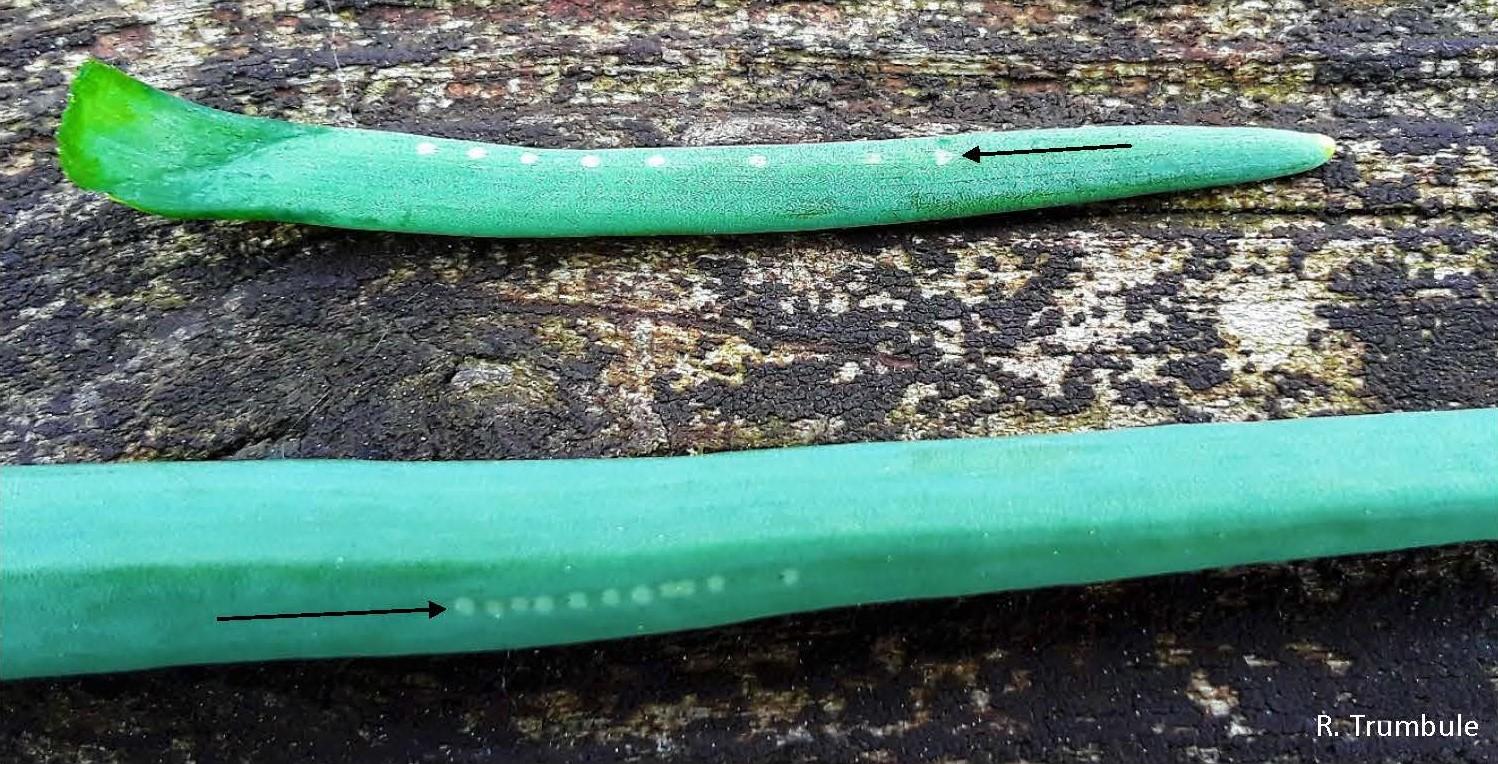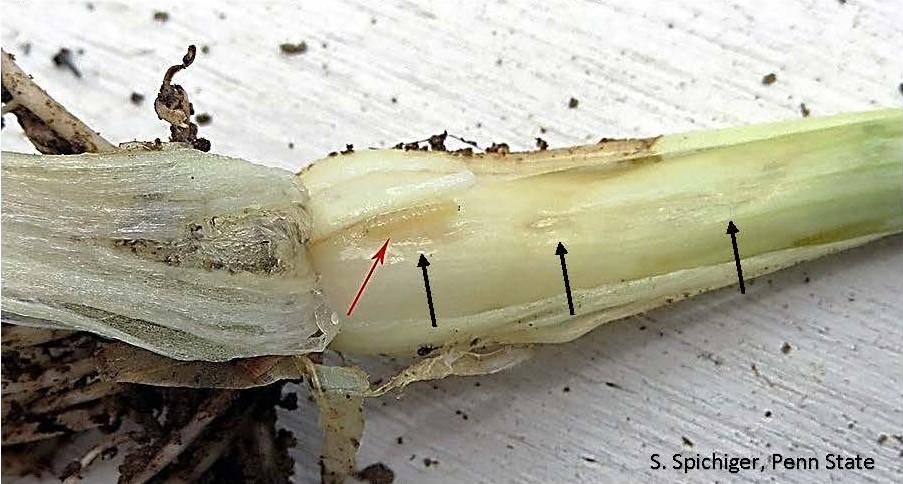Allium Leafminer Active and Spreading in Maryland
The pest of onion, leek and garlic, the Allium leafminer Phytomyza gymnostoma, is active now and is showing up in more counties in Maryland. Adults will be active in Maryland for the next 4-6 weeks. This pest was first observed in Maryland in Cecil Co. in 2017 and then in Baltimore county last year, but now the fly’s tell-tale marks (fig. 1) of small round white dots in a row have been found by Robert Trumbule an onion grower in Prince George’s county. This pest was originally found in Lancaster county Pennsylvania in December 2015. Unfortunately, it is my guess that the pest is now probably in many northern/central areas of Maryland. New transplants or seedings of onions or leeks should be watched closely for the tell-tale signs of the fly’s damage which are made by the female’s ovipositor. When eggs hatch the larvae at first mine leaves and then move down to the bulbs and leaf sheathes (fig. 2) where they feed and eventually pupate. At this time pupae undergo a summer aestivation and only emerge again in late September. Penn State has a great deal of good information about the new pest which can be found at: Penn State Allium Leafminer Pest Alert page. Growers should look for these tell-tale signs on any newly planted Allium species, but especially on leeks. You can cover any Allium planting with row cover to keep the flies off or if needed treat with insecticides. Penn State has found efficacy using neonicotinoids (Scorpion, Assail), diamides (Exirel), spinosyns (Entrust, which is OMRIlabelled), and pyrethroids. A spreader-sticker is recommended when applying insecticides to any Allium crop.

